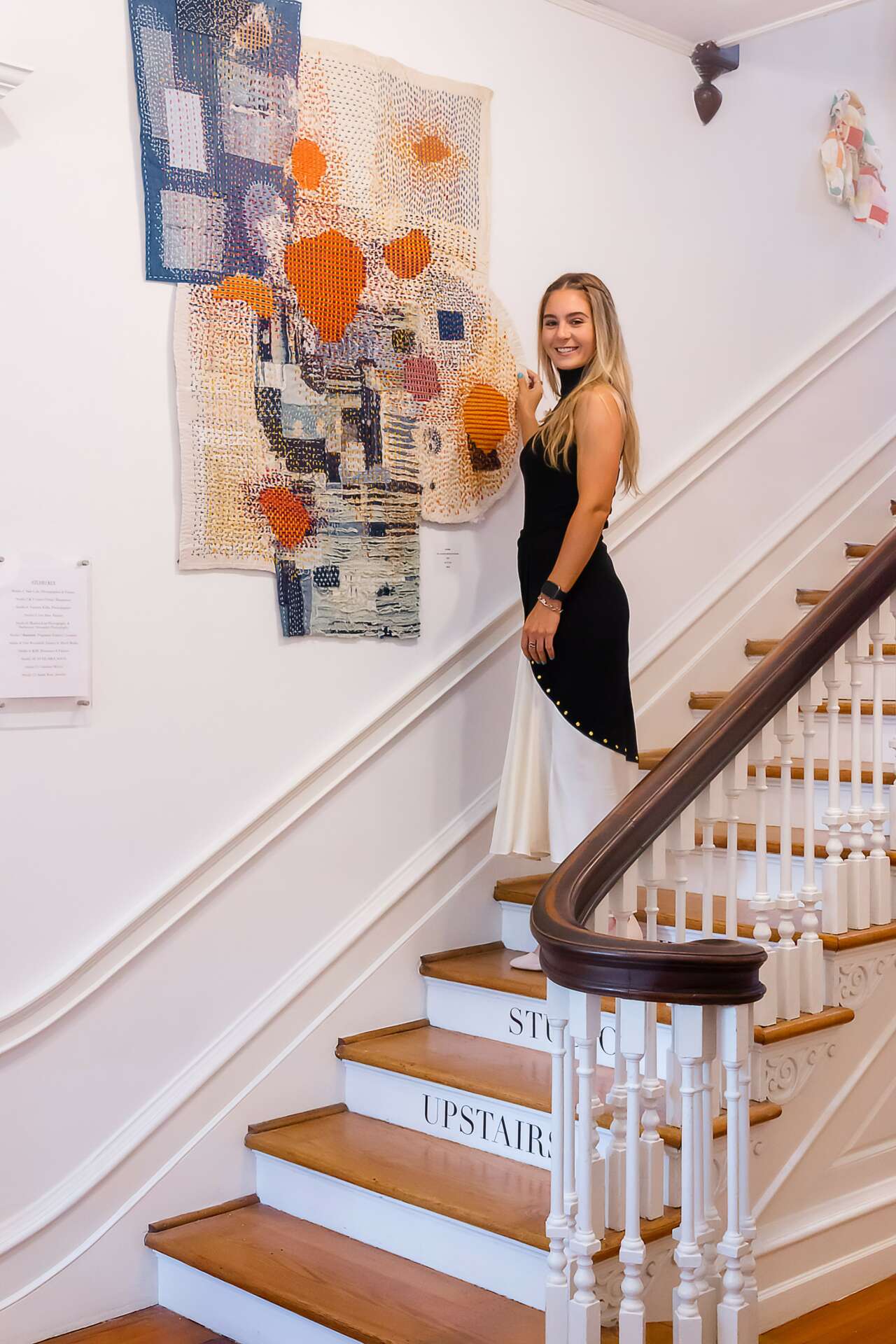Alright – so today we’ve got the honor of introducing you to Julia Luff. We think you’ll enjoy our conversation, we’ve shared it below.
Julia, thanks for joining us, excited to have you contributing your stories and insights. We’d love to hear about a project that you’ve worked on that’s meant a lot to you.
The most meaningful project that I have worked on was my MFA Fibers thesis collection. My thesis represents who I am. My research for the work started by examining my own values, diving into my personal history, and finding the nest way to represent myself through my craft. My background is in fashion design merged with my passion for sustainability and textiles. My interests naturally formed into my thesis collection.
My work examines historic mending practices. In a modern gesture I interpret their meaning and purpose through fiber paintings that highlight the importance of care and preservation of our belongings. Like our bodies, our clothing naturally ages. Mending is a way to examine what and why we consume. The process of my thesis work exhibits my take on traditional darning and mending practices to collage materiality morphing its state of being. This technique is overlayed in a repetitive fashion, forming a new textile all together while capturing impressionistic-like brush strokes, through the interconnected weaving of hand stitching. Mending of the things we own directly correlates to how much we value them. In the bigger picture we need to review what it means to value cloth, politically, globally, and fundamentally.
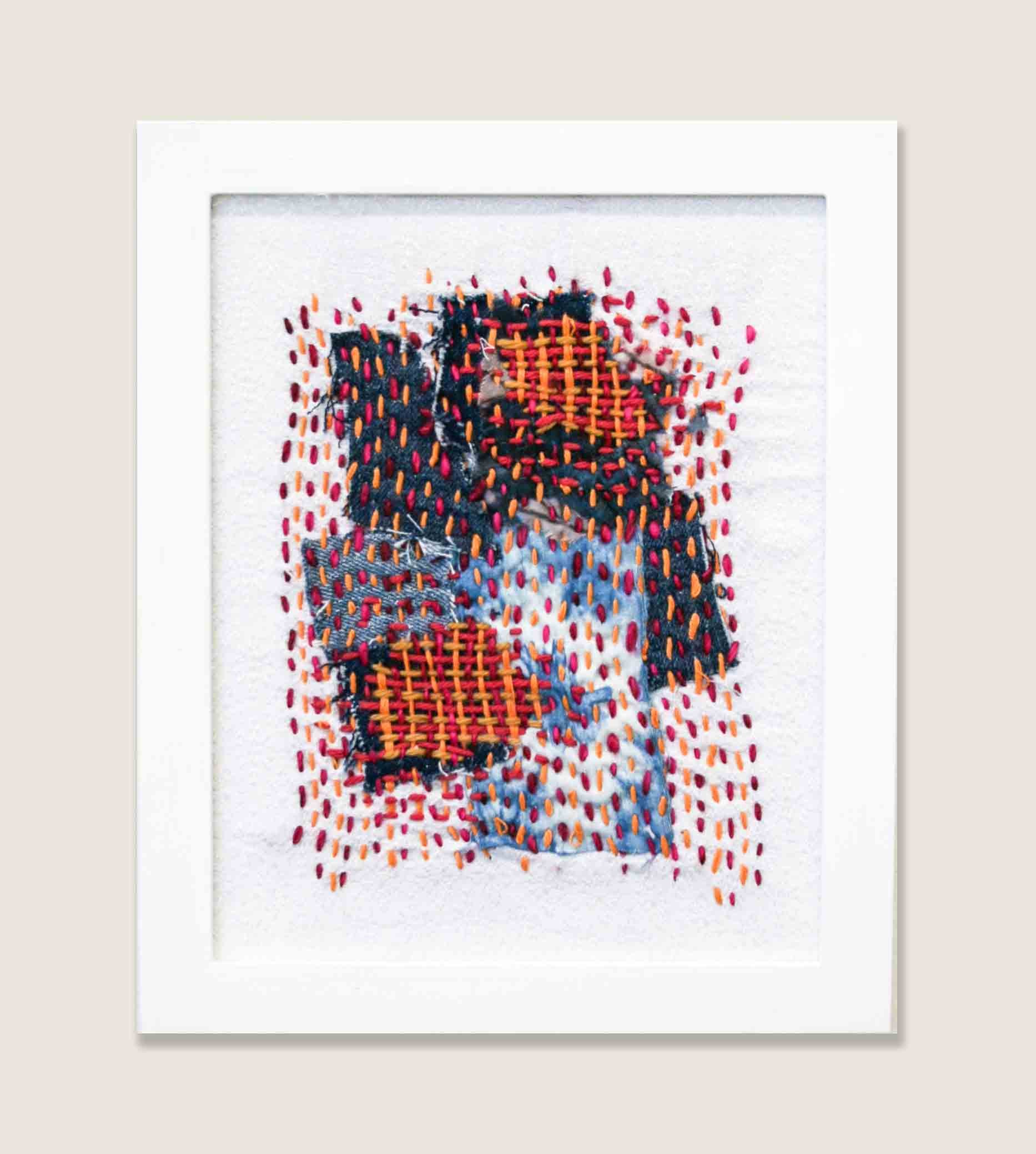
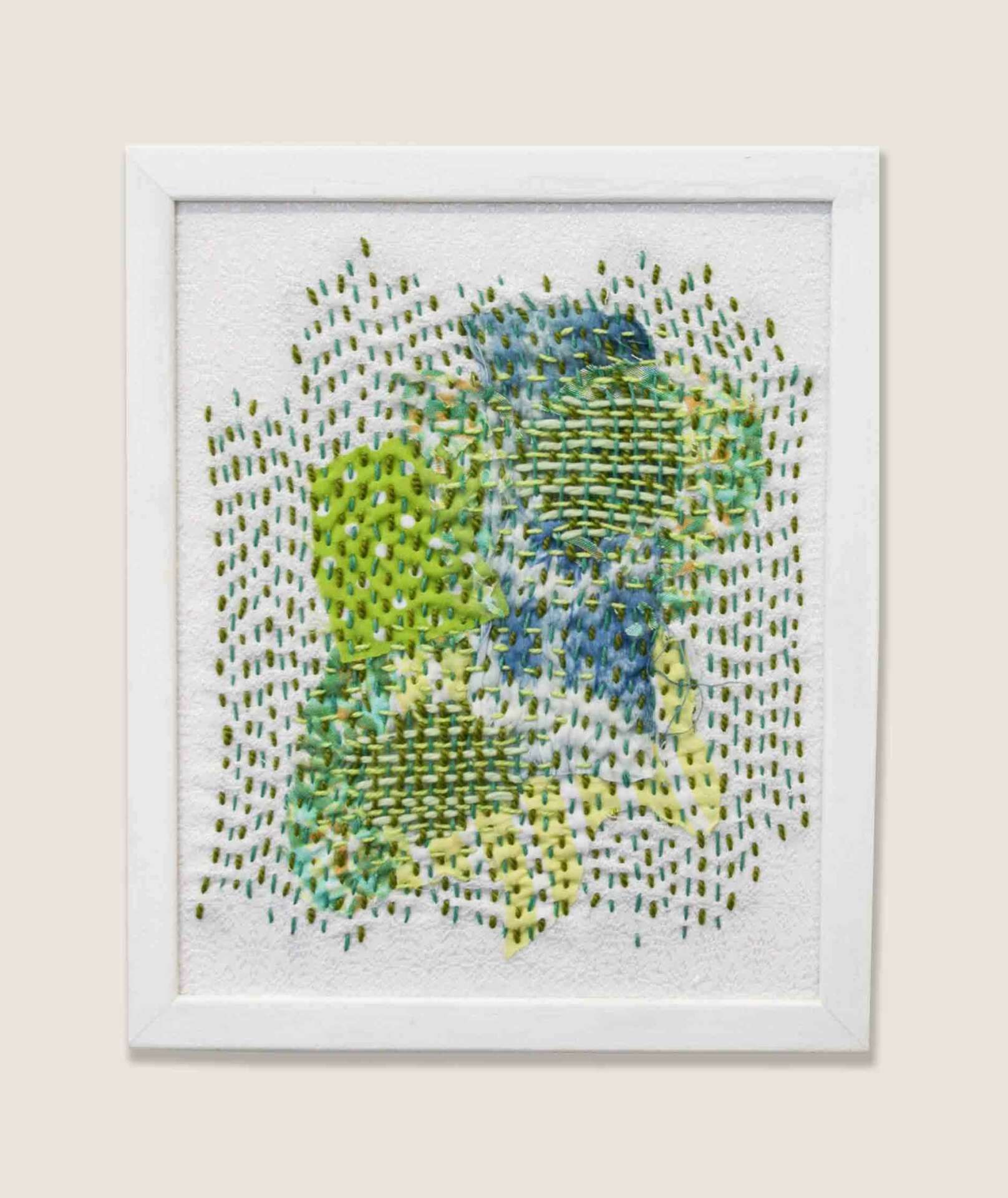
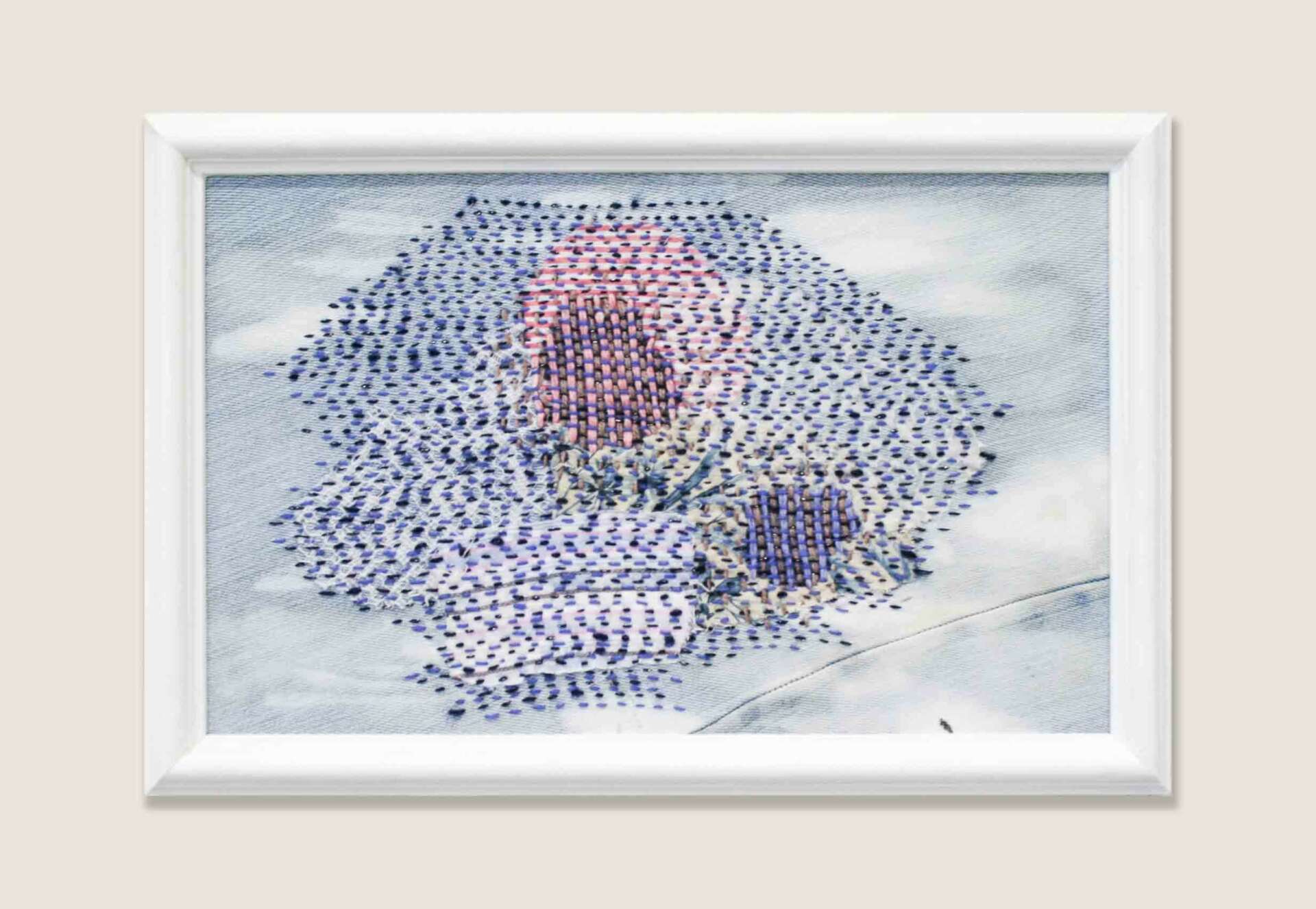
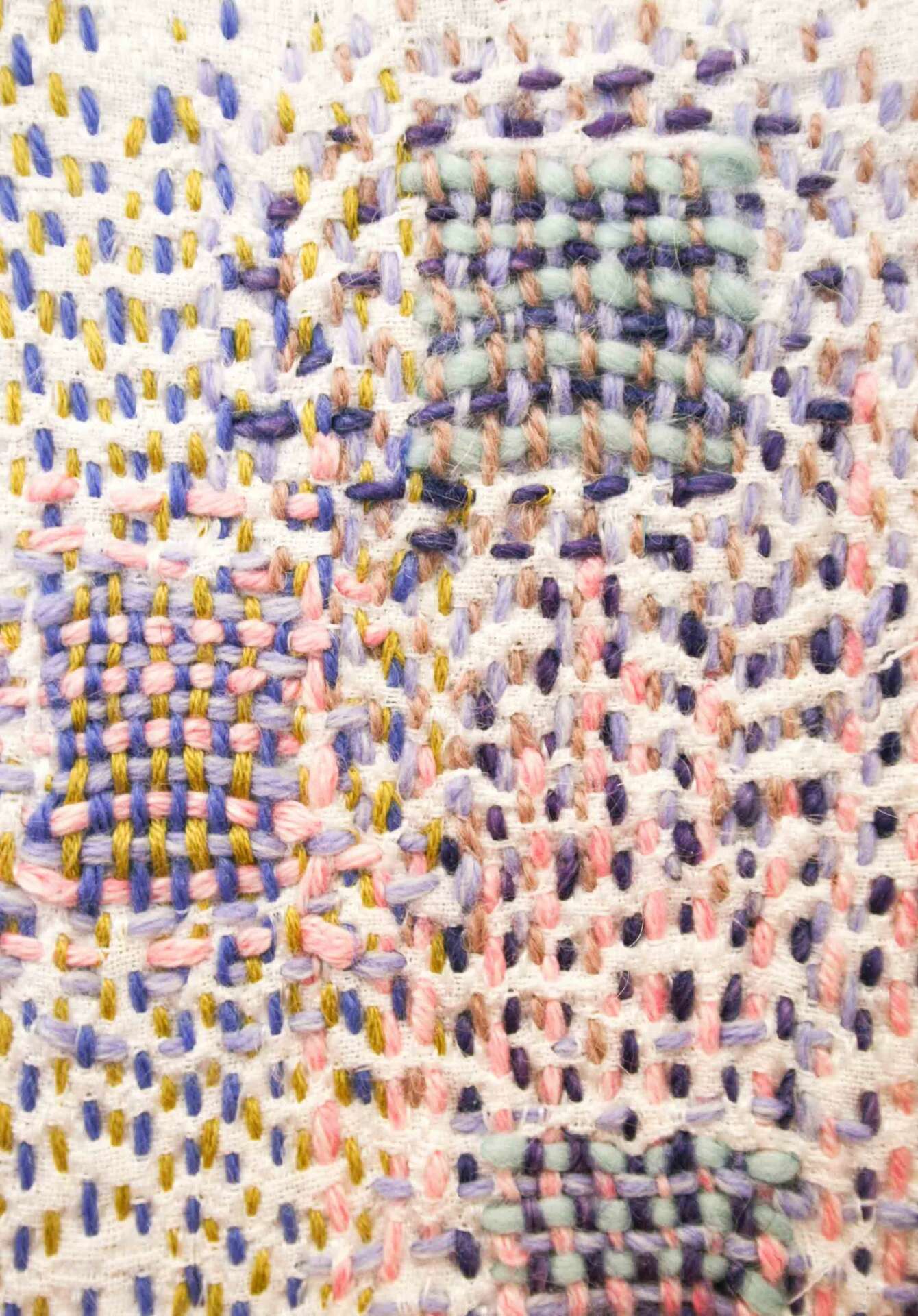
Julia, love having you share your insights with us. Before we ask you more questions, maybe you can take a moment to introduce yourself to our readers who might have missed our earlier conversations?
At the age of four, I taught myself to sew. My mother promised she would mend the purple knit pants I wore every day, but in the craziness of raising two children, she never had the time. The pants were so worn that both of my knees were completely exposed. Motivated by pure frustration, I took my worn, loved sweatpants and mended the holes.
In my earliest experience of sewing, I mimicked my mother’s movements with a bobby pin and threads on a tissue. I remember picking up my purple pants with my first sewing needle and having to figure out how to tie the knot in the thread,form the stitches and secure it at the end, closing the holes with clumsy stitches.
Looking back over the countless repairs I have made to my clothing; it seems that the hole or the absence of material is an expression of a story told by the wearer. The negative space is filled with the positive energy of a life in motion. Much like the negative space left by the wear in our clothing, our homes shift
and change though series of updates and repairs over time. When I was five, my parents bought a Mansard Victorian house built in 1870. The owner, Mrs. McKinnon, had lived there for the past eighty years. Her home was a time capsule of her life. When we first moved in, the walls were covered in layers of wallpaper with water damage and coal dust. My parents spent late nights laboriously removing those layers, and I helped where I could, observing their every move. Shortly after moving in my father lost his job, and the walls in my room were left as exposed horsehair plaster. The gravelly texture and rough grey of the plaster encapsulates my childhood memories. I loved to collage on my walls with any items I could find. My room in this house was my first real studio. I was shaped by the process of constant renovations and the rich visual history of the Victorian period that was ever-present in my daily life.
My childhood was framed by my parents’ frugality through recycling, repairing, and mending what we had. Each layer of wallpaper captured the history of those who have passed through the home. My family added our own story marked by the repairs and restorations we left behind.
My childhood impacted who I am as an artist, thinker, and maker. Much like the restoration of my home, the work I create now is centered around the appreciation of the history, preservation, and story our belongings tell. My process celebrates the journey of hunting for secondhand garments and repurposing them, giving them a new life. I am a fiber artist who integrates textiles, garments, and pre-consumer yarn waste from the fashion industry into fine art pieces.
At the age of 12 I decided I wanted to become a fashion designer. I was deeply inspired by the craft behind designing clothing. I wanted to join the industry and add my own unique voice and perspective. I graduated with my degree in fashion design with a minor in product development and merchandising in 2020. My senior collection was hand and machine knit sweaters and knitwear. All of my fibers were sourced locally in the Hudson Valley from farms. I even purchased fibers and learned how to spin my own yarns for my collection. When COVID hit disturbing my graduation I had some time to consider my own direction as a designer. I felt like my journey with textiles was just beginning. I decided to enroll in the MFA Fibers program at Savannah College of Art and Design to grow my knowledge. My focuses was on weaving and knitting. The program opened my eyes to the vast opportunities there are in textiles. This led me to a summer internship with Anthropologie as their Textile Concept intern. I never knew there was a job that focused on textile trend, development, and creative direction for a company. The following summer I accepted a role at Free People as a Textile Concept designer.
I have been working at Free People now for four months. I handle all of the structural textile design for the company. I design the wovens, jacqaurds and knits for the apparel teams.
Looking back, are there any resources you wish you knew about earlier in your creative journey?
One resource I wish I had learned earlier in my creative journey was the Ned Graphics. As a textile minded thinker I see now the value of understanding the construction and development of textiles that I only recently came across. The Ned Graphics programs are used for industry wide textile design. They allow designers to achieve incredible concepts through textiles that can simply not be down with other programs.
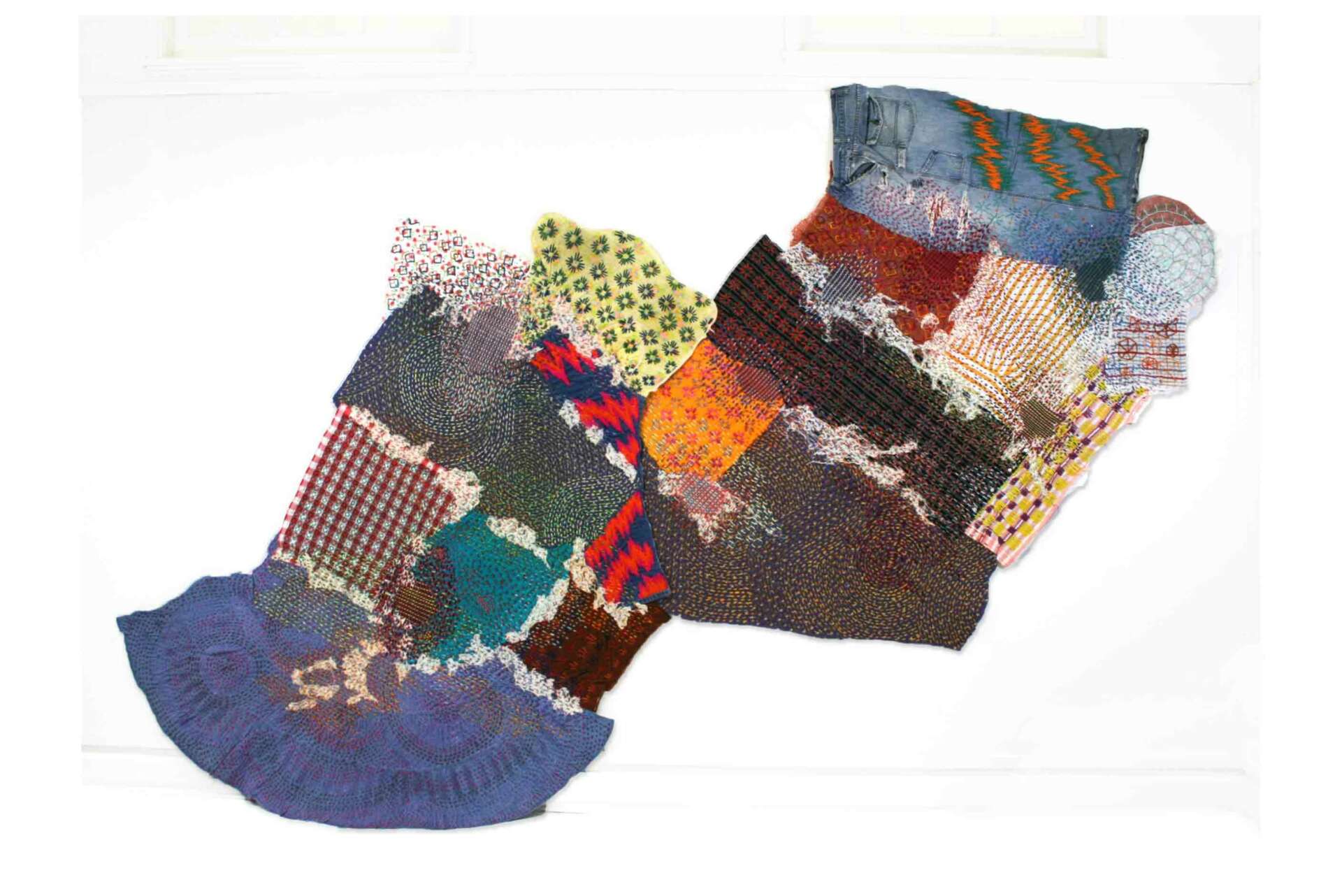
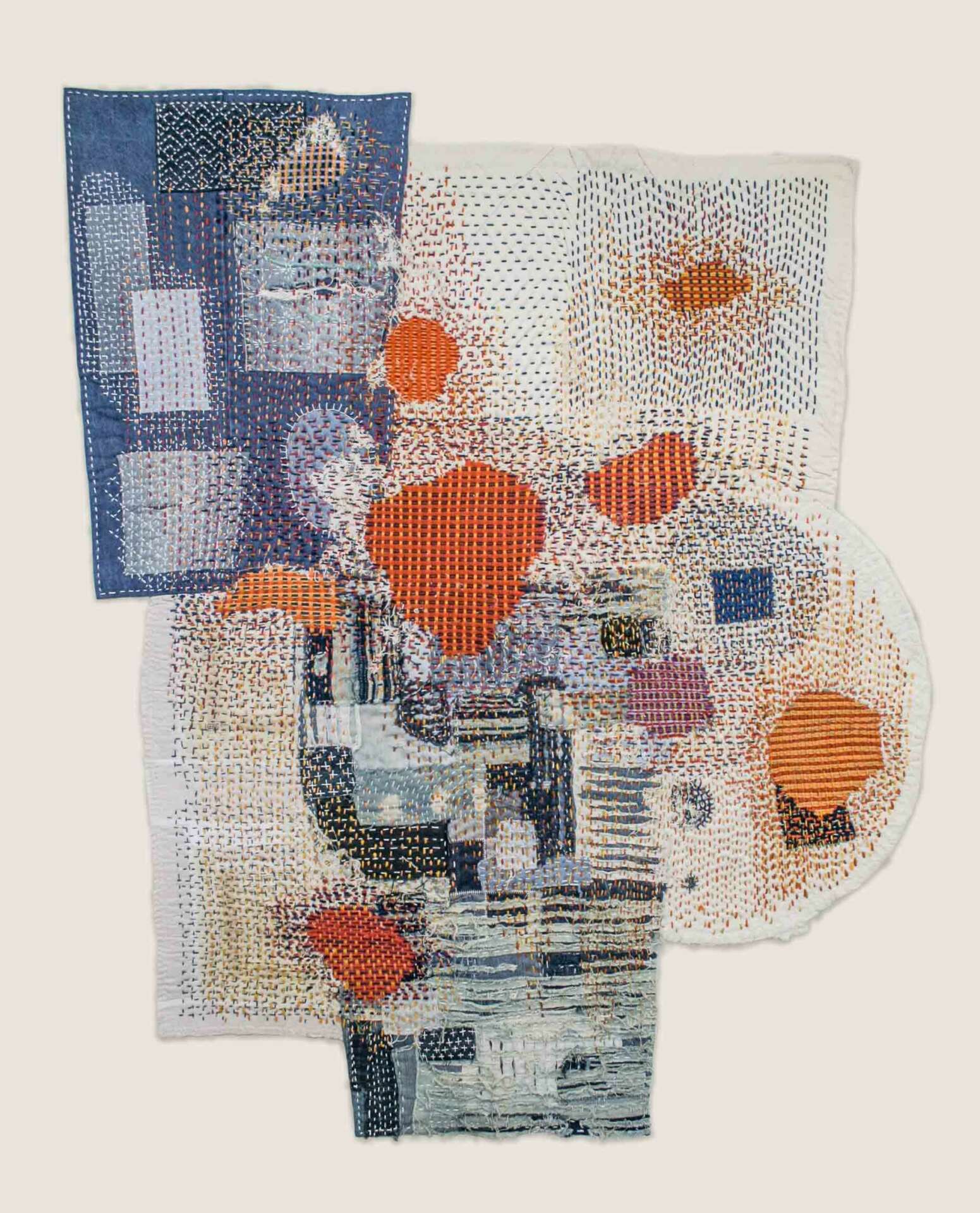
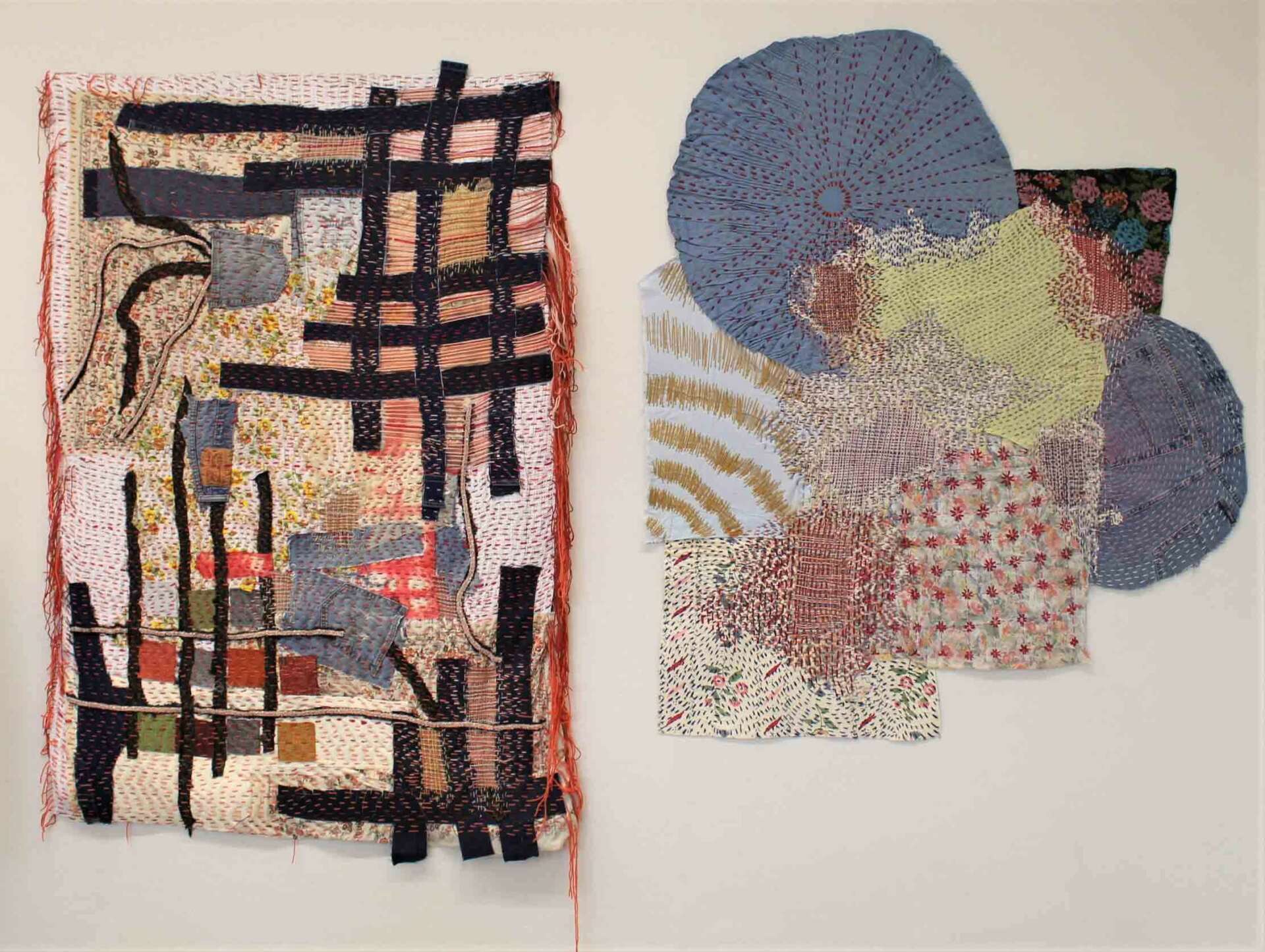
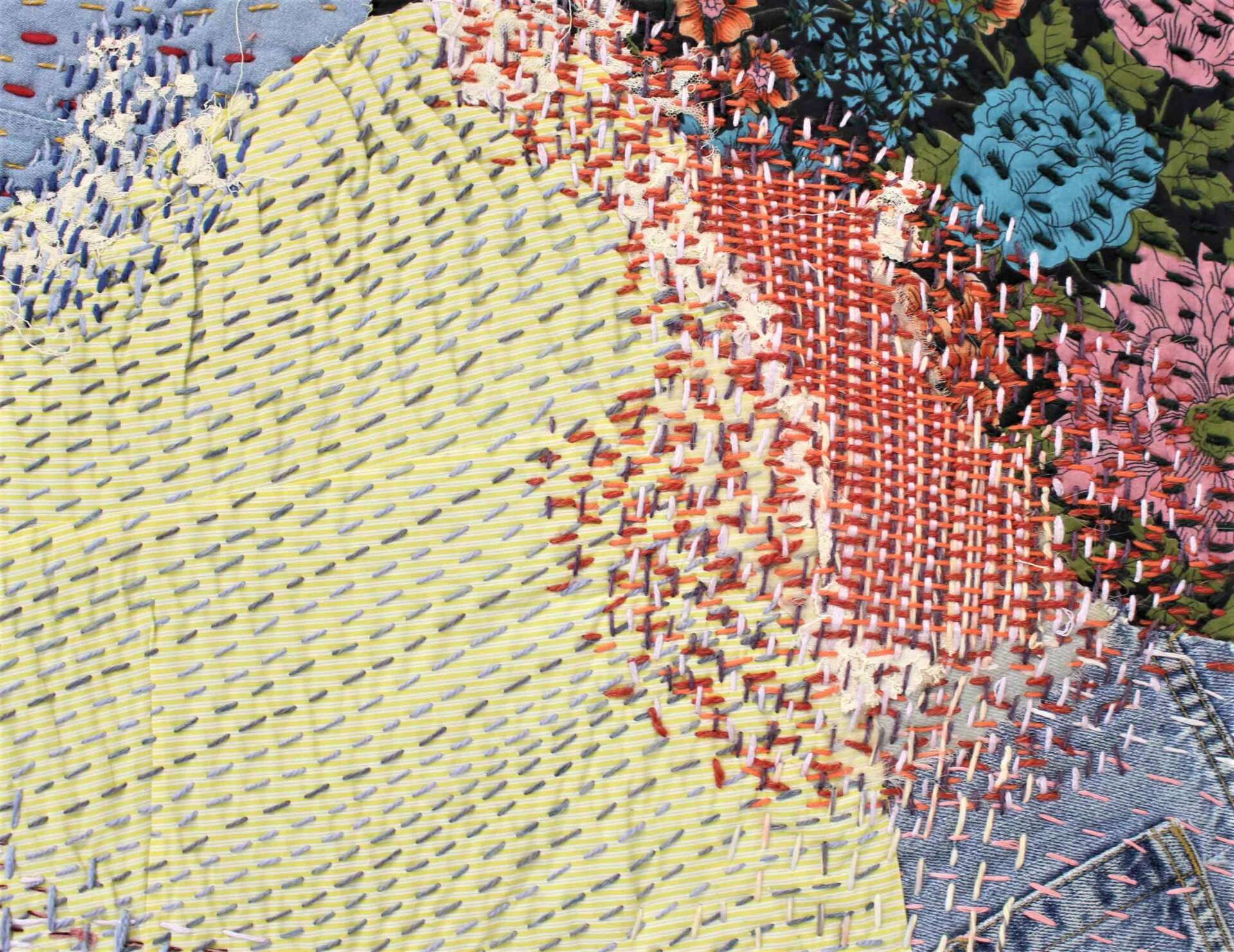
Have you ever had to pivot?
When I graduated with my BFA in fashion design I never pictured getting my MFA in Fibers. This was an unexpected pivot in my life that was caused by the pandemic. This was a once in a lifetime opportunity for me to have the time and resources to dedicate two more years to learning my craft.
I did not make this decision overnight. At the time I had signed a contract to join an apparel company as a men’s sweater designer. I took the time I needed to consider which path would get me closer to the person and creative I wanted to be. Turning down the job was extremely hard for me. Going back to school was a major risk. I had no idea what doors would open or close. My MFA offered opportunities that I could never have expected.
My masters opened my eyes to what was important to me and switched my career to textiles. I was able to invest in myself through learning, creating, writing, and reading. These practices pushed me to a new level of understanding myself.
Contact Info:
- Website: Julialuff.com
- Instagram: julialuff_fibers
- Linkedin: https://www.linkedin.com/in/julialuff/
Image Credits
Photo of Julia was taken by Maribel Holguin All photos of the work were taken by Julia Luff


